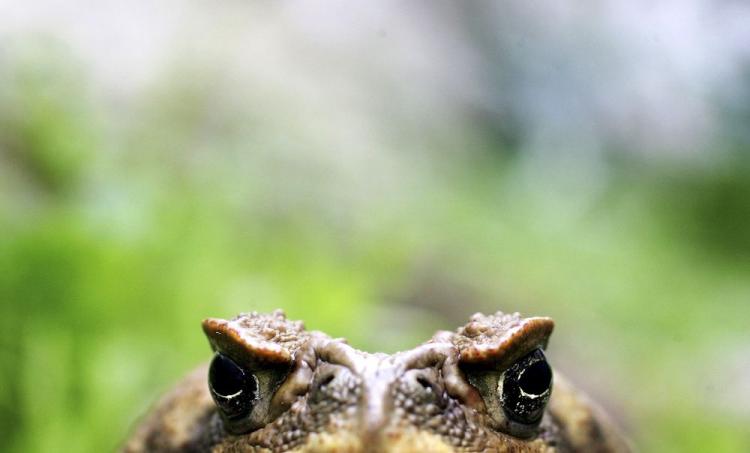The cane toad appears to be a pest superspecies, without any natural predators to keep it under control, having a large appetite for any animal provided it is not more than half its body length. It is a prolific breeder. Females are capable of producing in excess of 35,000 eggs at a time and it can survive in a range of rugged conditions, including brackish salty water and temperatures between 41°F and 104°F.
In Australia, it has broken through barrier after barrier, moving from North Queensland down as far south as Sydney and from the east through the Northern Territory into Western Australia.
The bottom line, however, is that it poses a serious threat to native animals due to competition and the cane toad is poisonous; for example, the critically endangered Japanese wildcat and the Australian northern quoll, a carnivorous marsupial.
Halting the March
Efforts to halt the march and eradicate the blighter have seen a vast array of campaigns evolve, including National Cane Toad Eradication Week and the 2008 Great Toad Muster. A number of dedicated groups have formed, among them the Kimberley Toad Busters (KTB), Frogwatch NT and Stop the Toad Foundation (STTF).
According to the STTF website, suggested eradication techniques include hand catching, fencing, trapping, grass fires, chemicals, sniffer dogs, sniping, and the “the skirmish line,” which involves lines of people casing caravan parks, waterholes, and parks in a “planned busting fashion.” For five years, KTB used carbon dioxide to euthanize over half a million toads collected by volunteers to protect the area’s vulnerable ecosystems.
The cane toad, however, marches on.
Latest Research
At the University of Sydney, professor Rick Shine’s “Team Bufo” is addressing the cane toad issue from various angles. Researchers have been training captive northern quolls to avoid toads by feeding them sausages made from toad legs.
Based on a learned behavioral response called Conditioned Taste Aversion (CTA), the resulting sickness from eating the sausages helps teach quolls to avoid toads. When released into the wild, toad-smart quolls avoided toads and were found to survive up to five times longer than their toad-naïve counterparts.
Professor Shine also recently found that sprinkling cat food around ponds attracts meat ants, which attack emerging toadlets. Unlike most native predators, meat ants are unaffected by cane toad poison and naturally prey on toadlets. The cat food serves simply to increase toadlet mortality by attracting more ants.
Scientists are developing various other eradication methods, including “daughterless toads” whereby a genetically modified strain that only produces male tadpoles could be bred with wild females. A toad control agent called the Bohle Iridovirus looked like a hopeful solution, but could not be authorized as it is a genetically modified organism.
Currently, parasitic infection by a species of lungworm seems to be slowing down the colonizing front in Western Australia, but “explorer toads” ahead of the front have thus far escaped the affliction.






